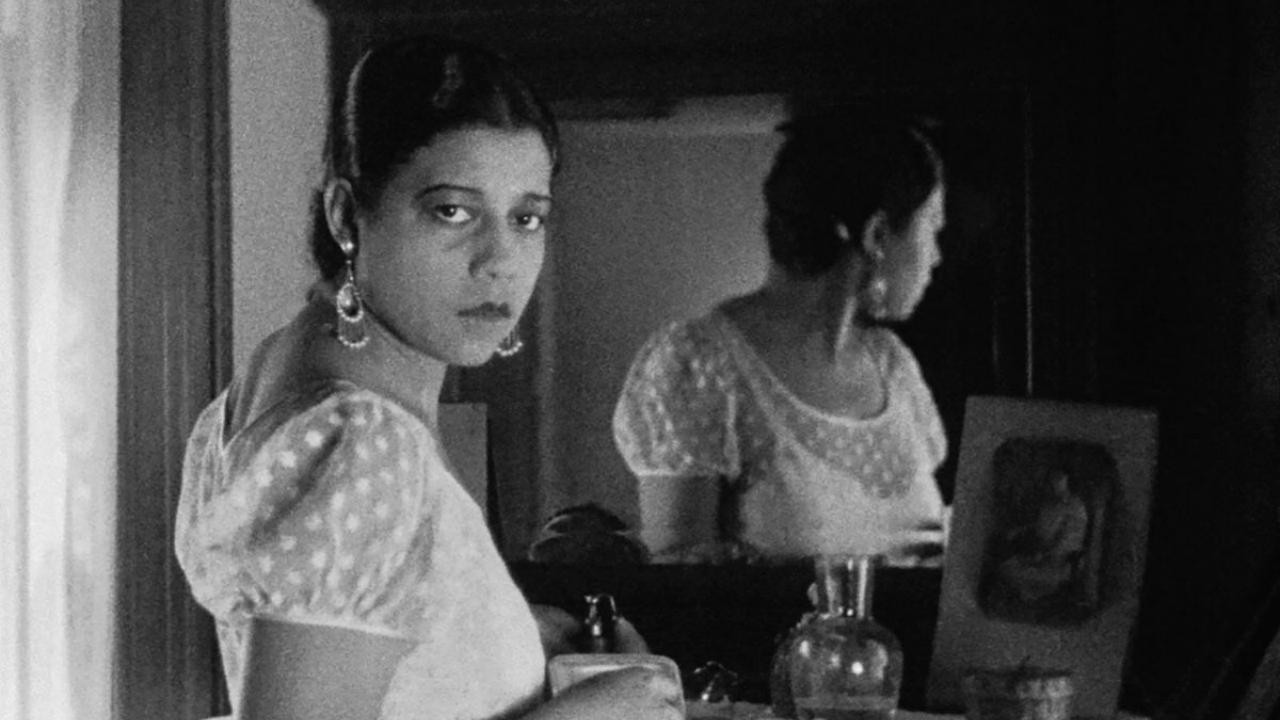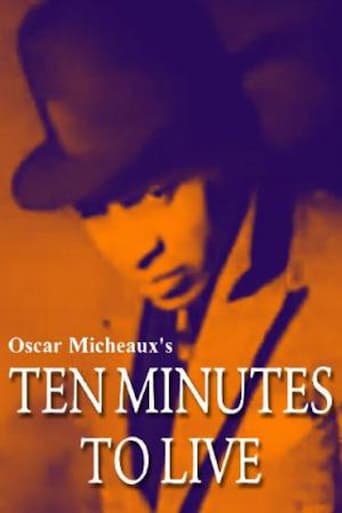

Ten Minutes to Live (1932) ** (out of 4)This Oscar Micheaux film clocks in at just 58-minutes and it pretty much has a little bit of everything in it. There's really no "plot" but it does have a few different story lines going on. One includes a movie producer trying to pick up a woman by offering her a role in his new film. Another subplot has a woman receiving a note saying that she will be dead in ten minutes. We also get a couple comedy acts as well as some musical numbers.Micheaux was producer and releasing quite a few pictures during this portion of his career and TEN MINUTES TO LIVE isn't nearly the worst but it's also not very good. The film is certainly very uneven but it remains mildly entertaining because the director manages to present a couple interesting acts and it's at least a very good time capsule to black entertainment from this period.The acts are interesting but I'd argue that none of them are overly good. The comedy bits are pretty weak and there's nothing ground-breaking about the musical numbers but it was just Micheaux's attempt to show black audiences some black talent. The two dramatic story lines aren't the most entertaining that you're going to see but they work well enough for what they are. They're basically two different short subjects mixed together with other shorts dealing with the music.TEN MINUTES TO LIVE features a couple decent performances scattered around and I'd argue that fans of race movies will at least get some mild entertainment out of it.
... View More"Ten Minutes to Live" was one of the first Oscar Micheaux films to emerge in modern times; it was first discovered by AFI in the 1970s. At that time, very little else of Micheaux was known to exist, and at the time no modern film scholar had seen anything like it, nor was it generally known that anything like it had been made at all. At the time, "Ten Minutes to Live" seemed so unique and out of the ordinary that such critical notices as were written tended to be charitable. Nevertheless, those who then saw the one, terribly battered print of "Ten Minutes to Live" weren't sure what Micheaux was up to; whether it was some kind of art film or some species of genre that they did not recognize. Fast forward four decades and we know a lot about Micheaux and the kinds of films that he made, and "Ten Minutes to Live," in that context, has suffered badly. It is clear now that the film is a failed narrative; in fact, two narratives drawn from an alleged short story collection entitled "Harlem After Midnight." The tales are called "The Faker" and "The Killer" and the front title promises three stories, but the film delivers only two. Perhaps Micheaux' later film "Harlem After Midnight" constitutes the third story not shown here. In any event, Micheaux never published these stories and it is difficult to make out from this film what exactly the narrative was.Time has not brought us a better print, and the one we have shows the telltale intrusions of censorship. In the first story, a fellow who claims to be a wealthy producer or something-or-other turns on the charm with several women. He tells one singer he can only pay her $3.25 a day to appear in a talking picture, and that appears to have been about the daily budget that Micheaux had to make "Ten Minutes to Live." There are so many ellipses and shortcuts that you can hardly tell a story is being told at all, and in the first part it so frequently interrupted by vaudeville acts and cutaways to non-speaking characters that you wonder who is actually participating in the tale told. The dancing, though, is all excellent, if not always shot to the best advantage, and in one scene the girls are crammed into a space so tight that they can barely move. Donald Heywood and his hard-working band are definitely an asset to the picture, even when their music is cut into little bits and shards, or interleaved with snatches of Beethoven symphonies. It is not completely foolproof, however; at one point a musician loses his music off the stand, and in yet another the whole band loses it place in the music, with the violinist diligently leading them back to the head.Despite the front title card's assertion that this is an "All Talking" picture, the second story, "The Killer," is strictly a part-talkie, and plays for most of its length silent. One wonders if this was something Micheaux had made earlier as a silent and merely added to "Ten Minutes to Live" with a few talking scenes added. Overall, as a film it is far more interesting than the first part and contains several beautiful visual touches, but these are mostly in the silent filmed sections. Once the sound returns, conversation is heard while a character, ostensibly in hiding, is seen overhearing and reacting to it -- for a very long time.While "Ten Minutes to Live" is not Micheaux' best effort by a long shot, it is also not his worst, and it would be his weirdest if "Swing!" didn't exist. If you approach it as a kind of arty affair and enjoy the dancing and music, you still might get something out of it. If you try to follow "Ten Minutes to Live" as a conventional story, however, you will get hopelessly lost. Not all actors are credited, and some are here credited incorrectly; some appear to be playing more than one part in the story, and there are lots of silent-style subtitles and letters to make things all the more mystifying.
... View MoreLaura Bowman had an extremely distinguished career. She was hailed as "the Negro Ethel Barrymore", performed at Buckingham Palace before Edward VII and appeared in theaters all over Europe. In 1916 she joined New York's first black dramatic company, the Lafayette Players in Harlem and appeared in over 500 productions. Although she didn't make many films, she always made an impression - whether as a conjure woman in "Drums O'Voodoo" (1934) or as a mad doctor in "Son of Ingagi" (1939).She was definitely the most prestigious member in the cast of "Ten Minutes to Live", hence her prominent billing. She played the elderly woman in the very first scene, who tells the lecherous film maker where to find Ida. There are two Idas - I'm not sure which is which but they are both singers in the Libya Club.
... View MoreFirst, this all-black 1930's production is admittedly unique. Extended dance sequences, vintage music, vaudeville and some unusual location camera work provide an invaluable look at a time in black history that you probably haven't seen much coverage of before. On the downside, the acting is junior high caliber and the plot is equally half-baked and thin. Certainly forward thinking in treating some blacks in the movie as thoughtful and sensitive beings at a time when some in America weren't on board with the concept. Unfortunately, it's just not very entertaining and has the look and feel of a silent movie that they dubbed with sound and dialogue sequences later to take advantage of the "talkie craze." If you're a student of black history, probably of minor interest. If you were led to believe this is a noirish black drama (as I was), you're probably better off going with DEVIL WITH A BLUE DRESS, HUSTLE AND FLOW or a Spike Lee joint.
... View More